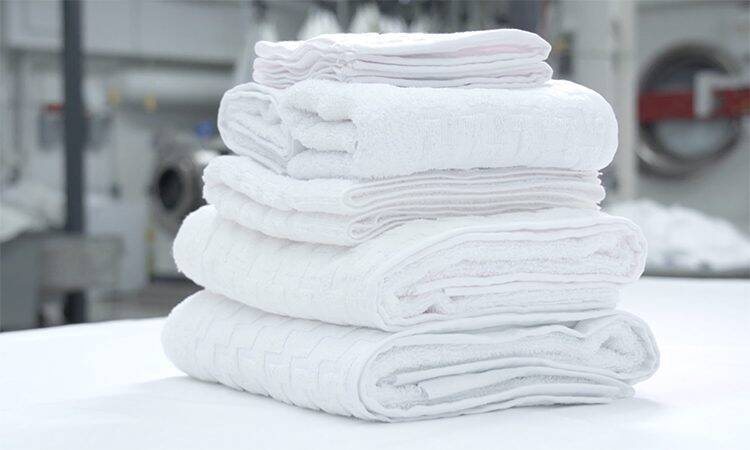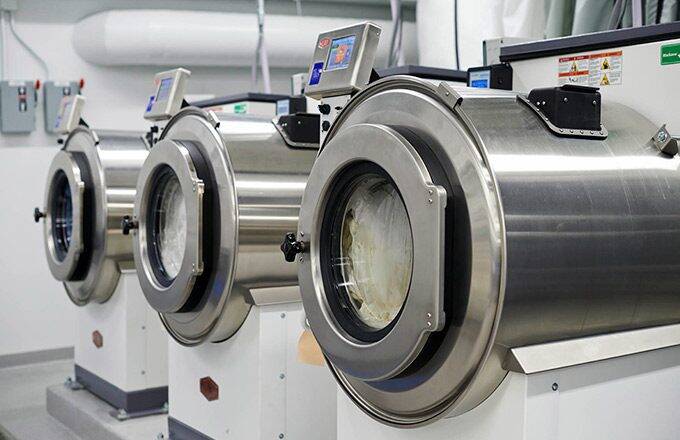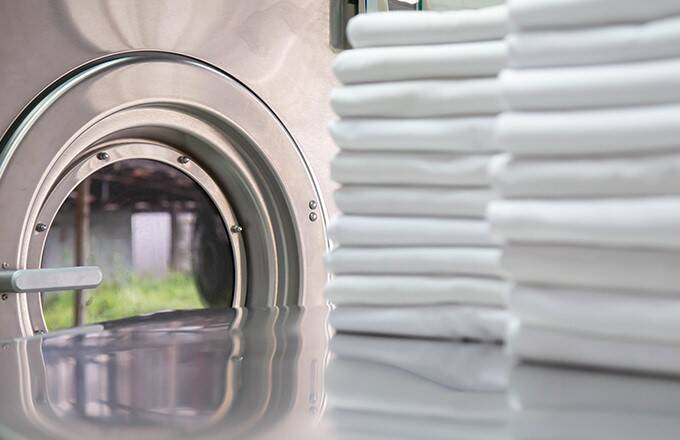June 8, 2020
What You Need to Know About Linen Shrinkage

Nothing is more frustrating than watching your hotel’s linen supply begin to dwindle unnecessarily due to product shrinkage. But understanding the root cause of shrinkage and how to prevent it in the first place can give you the upper hand on this natural, but nonetheless destructive phenomenon.
Let’s walk through how to avoid shrinkage of your hospitality linen and terry supply.
What Is Shrinkage?
Shrinkage is the reduction in size of a textile item after it’s been laundered. Shrinkage rates depend a great deal on the fiber content and the construction of the fabric. But, generally, cotton fibers will shrink approximately 6-8%, whereas polyester’s shrink rate is usually less than 3%. In addition, knits and loosely woven textile products will shrink more than tightly woven textile fabrics.
What Causes It?
Shrinkage usually occurs during the drying process as water is being evaporated from the fabric through the use of dry heat.
How Can It Be Prevented?
To maintain the intended finished size of the products being laundered, always be sure to follow these four simple preventative steps:
- Do not over-dry items.
- Use a prescribed cool down cycle at the end of the drying process.
- Sorting textile items before cleaning should be done based on the product’s fiber content. (i.e., a 50/50 sheet being processed with a 100% cotton sheet will likely be dry well before the cotton one.)
- Extraction of washed items should maximize the amount of water physically removed from the products. Not only is this a more cost-effective way to remove water, it also will shorten overall processing times and minimize the exposure of the fabric to heat. For those facilities using flat work ironers, it is important that the sheets be damp, not dry, as they are fed into the ironer.
When evaluating textile items for purchase, you should consider the expected end use of the product. This is especially true for fitted sheets as there has been a dramatic shift in the type and size of hotel beds being offered. Below are some factors to consider:
- Specifications for linen items should include expected shrinkage rates or at least an expected post-shrinkage size.
- Products should be trialed at your facility prior to purchasing a full order. Usually it takes up to 6 laundry cycles for the product to reach its finished/washed size.
- Even though polyester will shrink less than cotton, the trade-off is that polyester is not as comfortable a fiber as cotton. Engineered textiles with patented polyester/cotton blends can help ensure both comfort and product durability.
- Steam and electric dryers do not reach the temperatures of gas dryers. Usually gas dryers are more problematic when trying to prevent excessive shrinkage.
- Though very rare, thermal shock of polyester fabrics can cause them to shrink and pucker. Thermal shock happens when hot polyester fibers are exposed to cold air. If the drying cycle uses air from outside for its cool down process and the outside temperature is well below freezing, thermal shock can happen.
This is the fifth article in our series on laundering best practices. Be sure to check out the other articles:
- Laundry’s Dirty Little Secret: Redeposition
- Are These 5 Problems Ruining Your Hotel’s Linens?
- 5 Tips to Help Your Hotel Laundry Reduce Wrinkles
- Use This 5-Step Process for Hotel Linens That Perform Better
- 5 Tips Steps to Tackle Cosmetic Stains on Your Hotel’s Linens
Have any other questions about laundry? Ask Our Laundry Experts Today.
Related Content

Hotel Laundry 101: How to Keep your Laundry Running Smoothly
Our top tips to keep your hotel laundry running smoothly despite labor shortages and inexperienced staff.

Laundering Best Practices: 8 Part Series Recap for Perfect Laundering
Laundry care can affect the perception of your hotel and your bottom line. This can make a big impact on guest satisfaction and the rate at which a hotel gains repeat customers, so it’s important to take a look at your laundry practices to ensure you’re consistently delivering the best results.

When to Replace Used Linen
Whether due to a stubborn stain, a tear, or discoloration, it is important that your laundry and housekeeping staff know when to replace used linen.